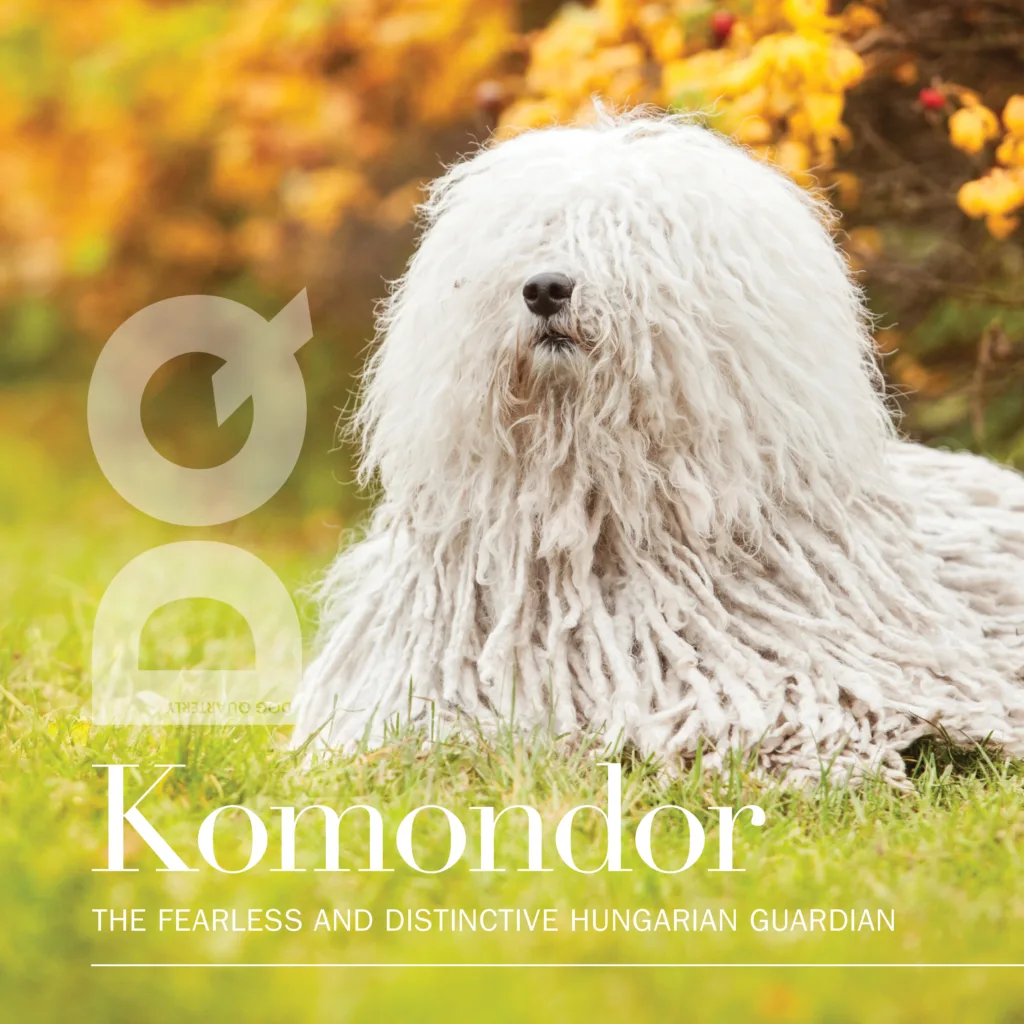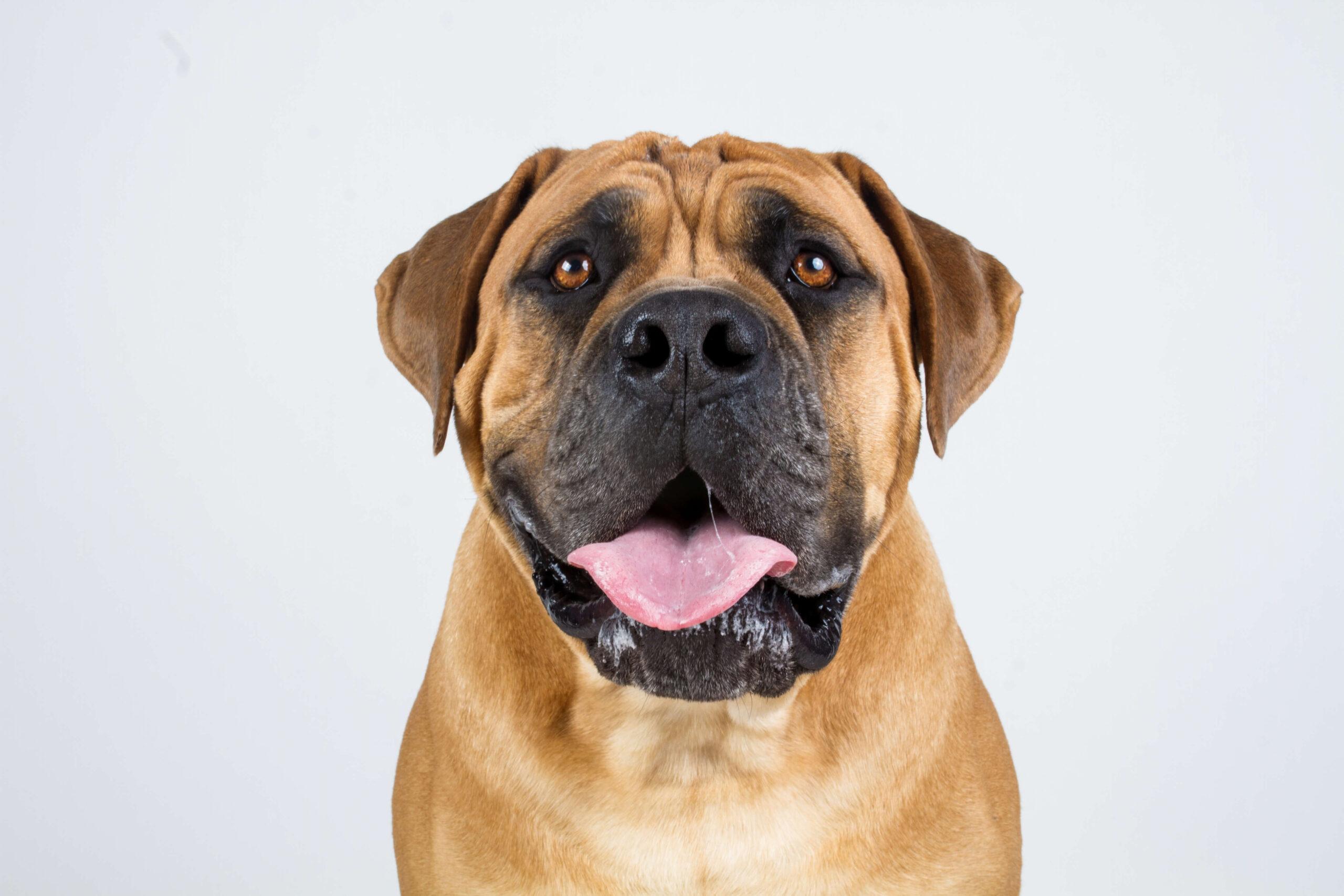The Komondor, often called the ‘Hungarian sheepdog’ or the ‘mop dog,’ is one of the most striking and unique-looking dogs in the world. With its long, corded coat that resembles dreadlocks, the Komondor is instantly recognisable. However, beyond its unique appearance, the Komondor has a rich history, impressive strength, and a fiercely loyal and protective temperament. This ancient breed has been guarding Hungarian flocks and homesteads for centuries, and today, it remains a steadfast protector and affectionate companion.
Origins and history
The Komondor has a long history dating back over 1 000 years. Originally from Hungary, the breed is believed to have descended from dogs brought to the region by the nomadic Cumans, a Turkic people who settled in Hungary around the 12th century. These dogs were bred specifically to guard livestock, such as sheep and cattle, from wolves, bears, and human thieves. The Komondor’s white, corded coat allowed it to blend in with the sheep while remaining nearly impervious to attacks.
The Komondor’s role as a guard dog continued into the 20th century, and it was officially recognised as a distinct breed in Hungary in the early 1900s. Though its numbers declined after World War II, interest in the breed has grown over the last few decades, and today, Komondors can be found in many countries around the world. However, the breed remains relatively rare outside its homeland.
Physical characteristics
Size and build
The Komondor is a large, muscular dog with a powerful build designed for protection. Males typically stand 70cm or taller at the shoulder, while females measure around 65cm or more. The breed’s weight ranges from 35kg to 45kg for females and 45kg to 60kg for males, making it one of the largest guardian breeds. Their size, combined with a fearless disposition, makes them an imposing presence.
Coat and colour
The Komondor’s most distinctive feature is its coat, which forms natural, dense cords that give it a ‘mop-like’ appearance. The coat begins to cord naturally as the dog matures, usually between the ages of 1 and 2 years. These cords act as natural armour, protecting the dog from predators and harsh weather. The Komondor’s coat is always white, although the cords may darken slightly with age. This helped them to blend in with the flock of sheep or other livestock they were guarding. Beneath the thick corded coat is a dense undercoat, providing further insulation.

Eye and ear shape
Komondors have almond-shaped eyes that are typically dark brown, giving them a calm, intelligent expression. Their ears are medium-sized and set high, lying close to the head.
Temperament and personality
The Komondor is known for its loyalty, intelligence, and fierce protective instincts. These traits make it an exceptional guard dog, but they also mean it requires careful socialisation and training.
Protective instincts
The Komondor’s primary role for centuries has been to guard livestock and property. This instinct remains strong, and they tend to be very protective of their family. Komondors are naturally suspicious of strangers and may react defensively if they perceive a threat. However, with proper training, they learn to distinguish between a real threat and everyday situations.
Affectionate with family
Despite its formidable appearance and protective nature, the Komondor is known to be affectionate with its family. These dogs often form strong bonds with their human companions and can be gentle, especially with children in the household.
Independent and intelligent
As a working breed, the Komondor is intelligent and capable of making decisions independently. This trait can sometimes make training challenging, as they may be stubborn or resistant to repetitive commands. However, positive reinforcement training, combined with early socialisation, can help bring out the best in a Komondor.

Training and socialisation
The Komondor’s size, strength, and protective nature make early training and socialisation essential. As an intelligent breed, the Komondor is capable of learning quickly, but it also has an independent streak. Here are some important considerations for training a Komondor:
– Start early: Socialisation should begin as early as possible, exposing the Komondor to a variety of people, animals, and environments. Proper socialisation helps the dog develop a balanced temperament and reduces the likelihood of aggression towards strangers.
– Consistency and patience: Komondors respond best to consistent, firm, yet gentle training. Positive reinforcement methods, such as treats and praise, work well.
– Protection training: While the Komondor’s natural protective instincts make it a vigilant guard, professional protection training is not generally recommended. This breed already has a strong guarding drive, and formal protection training can amplify their aggression.
– Mental stimulation: Komondors are intelligent and enjoy mental stimulation. Puzzle toys, obedience training, and tasks that mimic their guardian role can help keep them engaged and happy.

Care and grooming
The Komondor’s unique coat requires special grooming techniques to maintain its health and appearance.
Corded coat maintenance
The Komondor’s coat forms cords naturally, but the process requires some guidance from owners. As the dog grows, the cords may need to be manually separated to prevent matting. Bathing a Komondor can be time-consuming, as the cords need thorough rinsing and a very long drying time (up to 24 hours). Professional grooming or dedicated at-home care is essential for the breed.
Brushing and trimming
Unlike other breeds, Komondors do not require regular brushing; in fact, brushing disrupts the corded structure. However, they may need trimming around the mouth and eyes to keep these areas clean and prevent debris from accumulating.
Health care
Komondors are generally healthy, but they can be prone to hip dysplasia and bloat (gastric torsion), which is common in large breeds. Owners should monitor the dog’s weight, provide a high-quality diet, and avoid vigorous exercise right after meals to reduce the risk of bloat. Regular check-ups with a veterinarian are important to maintain the breed’s overall health.
Living with a Komondor
Owning a Komondor requires commitment, space, and understanding of the breed’s unique needs. They are well-suited to homes with large, fenced yards where they can roam and patrol, fulfilling their natural guardian instincts. Apartment living is generally not ideal due to the Komondor’s size and need for space.
The Komondor thrives in households where it can fulfil a purpose, whether protecting the family, watching over property or simply staying close to its human companions. They are not overly energetic but need daily exercise to keep fit and mentally stimulated. While they are protective, they are not aggressive without cause and can be a loyal, loving family pet when given proper training, socialisation, and care.
Is the Komondor right for you?
The Komondor is not a breed for every owner. Its size, protective instincts, and grooming requirements mean it demands a committed, experienced handler who understands its needs. However, for those who are willing to invest time in training and care, the Komondor offers unparalleled loyalty, companionship, and protection. This breed is ideal for those looking for a guardian, a loyal family dog, and a unique, one-of-a-kind companion.



